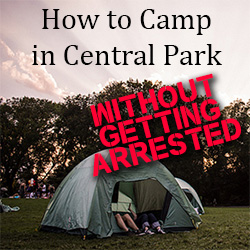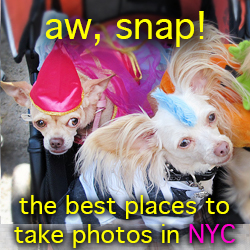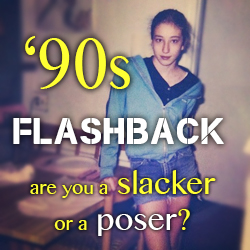Gowanus, Brooklyn has long been associated with its canal– and that’s not a good thing.
Considered one of the “most extensively contaminated water bodies” in the United States by the EPA, the Gowanus Canal has been accumulating raw sewage and industrial waste since it was completed in 1869.
Given the high price of New York City real estate, it comes as little surprise that the area is undergoing a transition from industrial zone to “up and coming” residential neighborhood.
For those curious about the history and future of Gowanus, Made in Brooklyn Tours has just launched a walking tour of the neighborhood. I was invited on the inaugural tour, which included stops at a potter, woodshop, brewery and pie shop.
This is one of five tours led by Dom Gervasi, owner of Made in Brooklyn Tours and a proud Brooklyn native. All tours highlight small businesses and craftspeople who are “part of the cultural fabric of Brooklyn,” in Dom’s words.
Scroll down for photos and details of the 3-hour Gowanus walking tour.
The Canal
On a brisk but sunny Saturday afternoon in December, I boarded the subway and set out for Gowanus. The tour started at 1:30 at the National Packing Box Factory, a historic manufacturing building that now contains artist studios.
Our guide, Dom Gervasi, dove right into the history of the area after a brief introduction. He brought a binder with photos and maps to help us visualize the trivia. Dom’s knowledge of local history was impressive; he had clearly done his research and didn’t hesitate to tell us when he didn’t know the answer to a question. A few hours after our tour ended, he even sent a follow-up email to participants with detailed answers to their questions and links!
At first glance the Gowanus Canal doesn’t look too threatening, although the bright green-blue hue of the water is reminiscent of antifreeze. Since the pumping station is currently inoperable, the stagnant water forms a mirror image of the buildings and trees on its banks. The water is contaminated with a mix of raw sewage and pollution from the gas industry, including a byproduct known as “coal tar.” This is not somewhere you’d want to go for a swim!
Dom explained that the flow of water has been reversed a few times over the years, and when the pumping station is reopened (in the next few years) the water flow will be returned to its original direction.
Traditionally, the west side of the canal is residential while the opposite side (which we explored) is home to factories, warehouses and craft guilds. However, with the neighborhood in transition, it’s unclear whether the area will remain a manufacturing center.
Claireware Pottery
The first local business we visited was Claireware Pottery, housed in the National Packing Box Factory. Owner Claire Weissberg has created her colorful pottery in the neighborhood for twenty years, and says that Gowanus has changed very little in that time. Her store consists of a ground-level showroom that looks into her potter’s studio, where she has an assortment of paint and other supplies. During Hurricane Sandy, Nevins Street saw about 3 feet of water and Claire lost some merchandise when the basement was flooded; there is still a water mark on the side of the building.
Half of Claire’s business is from walk-in costumers, many of whom are staying in the nearby Holiday Inn hotel. Her merchandise is affordable, with prices starting at $14 for small plates. I couldn’t resist purchasing one as a holiday gift!
Retractable Bridges
Six retractable bridges cross the Gowanus Canal, Dom explained as we paused on the Canal Street Bridge. Coincidentally, a film crew was shooting on the bridge when we visited.
The metal bridges provide up-close views of the Canal, which has been designated a US government Superfund site. This status is given to areas contaminated by hazardous waste. Local opinions vary over what to do with the Canal, and Dom was careful to steer clear of politics when discussing these different ideas for handling the site.
Textile Arts Center
After touring the Canal we headed to the Textile Arts Center on Carroll Street. Wooden looms and spools of yarn fill the loft, which attracts beginners and artisans looking to hone their knitting, sewing and weaving skills. In an interesting twist, the Textile Arts Center started in Brooklyn and later opened a Lower Manhattan outpost.
Coignet Stone Building
Our next stop was a 19th-century building, standing alone on a construction site, that was built by the Coignet Stone Company. It was one of the first local buildings to be built with reinforced concrete, Dom explained, and will soon be surrounded by Brooklyn’s first Whole Foods supermarket. Gowanus is still home to several cement companies, which have provided materials for the fallen World Trade Center and the current Freedom Tower.
The Batcave
On the same stretch of road, we stood outside a red building known as “The Batcave.” Originally owned by the Brooklyn Rapid Transit Company, the brick building was abandoned and became a drug den in the 1950s. Most recently it served as a canvas for graffiti artists. In November 2012 it was purchased by Joshua Rechnitz for $7 million, with plans of being converted into artist studios.
Whole Foods Site
On the banks of a particularly pungent section of the Gowanus Canal, a new Whole Foods supermarket is under construction. Dom informed us that the site was flooded during Hurricane Sandy (as was much of Gowanus, which is in flood zone A), leading to some uncertainty over the opening date. Grey silos and warehouses framed the construction site.
Eagle Clothing Sign
We paused at the Eagle Clothing Sign, a relic of the area’s garment manufacturing past. Dom has his own theory about the company’s 1977 bankruptcy, believing it was caused by the rise of the polyester leisure suit!
Community Woodshop
With the temperature dropping, we were relieved to head indoors on the next stop, the Old Sweater Factory. The building houses Makeville, a “community woodshop” that offers studio space and classes for New Yorkers who want to hone their woodworking skills. Robyn Mierzwa, one of the many female business owners in Gowanus, has doubled the size of the woodshop since founding it in 2008. Clients find the studio through word of mouth and Internet searches, as Robyn doesn’t do any advertising.
Brooklyn Homebrew
After a few hours of walking, we were ready for a drink! We stopped at Brooklyn Homebrew to learn more about home brewing from co-owner Benjamin Stutz. He and his wife Danielle had been making beer for 10 years before opening their supply store in Gowanus. They decided to focus on a brick and mortar store to provide “a local place where [customers] can see, touch and smell” the grains and hops. Benjamin revealed that becoming a home brewer doesn’t require any special skills or expensive merchandise; all you need to get started is a large spaghetti-style pot and a glass jug for the fermenting process. The shop sells everything a home brewer needs– from beakers and tubes to organic grains– and their beginner’s kit made our 2011 list of top Christmas presents. To cap off our visit, we sampled an American Amber Ale made from Benjamin’s own recipe. (The store does not sell alcohol, so our tasting was a nice perk of the tour).
Four and Twenty Blackbirds
After three hours of walking, we worked up quite an appetite. Thankfully, our final stop was at local pie shop Four and Twenty Blackbirds. Dom had pre-ordered two pies for our group of twenty, and we commandeered a long table. The bakery was already crowded with patrons, and for the first time I felt self conscious about being on a tour and over-running the place. However, my first bite of the Black Bottom Oatmeal pie banished all traces of embarrassment! I am not normally a fan of pie, but this chewy, gooey dessert tasted like a caramel brownie mixed with a granola bar. Words cannot describe how delicious it was.
The Bottom Line
The Made in Gowanus Tour is a great way to explore an off-the-beaten-path neighborhood known as a haven for artists and craftspeople. If you’ve ever been curious about the Gowanus Canal or what might be the “next big thing” in New York City real estate, don’t miss this tour! Note that you’ll be walking and standing for 3 hours straight, so make sure to bring water and wear comfortable shoes.
The Details
Made In Brooklyn Walking Tours
What: Group walking tours lasting 3 hours, with groups of 4-12 people.
Where: Five tours are offered, all within Brooklyn: Bensonhurst, DUMBO, Gowanus, Red Hook and Williamsburg.
When: Group tours are offered on weekends and listed on the website; private tours can also be arranged.
To Book: Visit the website for Made in Brooklyn Tours
Cost: $40 -$50 per person, depending on group size. For private/custom tour rates, send an email to Dom@MadeInBrooklynTours.com.
Have you been to Gowanus?
Share your thoughts on this emerging neighborhood by leaving a comment below! If you are reading this via email or RSS feed, click on Downtown Traveler to leave a comment.

































Cool, I had no idea what was in Gowanus. Looks like a place to explore next time I visit Brooklyn.
Gowanus is definitely worth a visit– it’s interesting to see the transition from industrial zone to “up and coming” residential area.
Oh, this tour looks really fun! Great photo ops for sure.
Totally! Much of the tour was outside and we made several stops at different points at the canal. There were great photo ops 🙂
Had no idea there were tours for Gowanus. Pretty cool!
I know! Gowanus wasn’t really on my radar before the tour, but I’m glad I went. Now I know about the history of the area and the issues facing current residents. So informative!
Interesting parallels between the Gowanus Canal and the Chicago River. Our sewage system, I mean Chicago River also is pretty disgusting and they have changed the flowage a couple of times. Fortunately, it is getting better thanks to a mandate from the EPA.
Sounds like an interesting tour. Very cool the dude followed up with email questions. Love the pic of you and Charu.
Wow- sounds like you have a similar situation in Chicago. I was totally impressed that the Gowanus tour guide, Dom, followed up with an email. He is a wealth of information and very happy to share his knowledge with participants 🙂
The Gowanus Canal is a fascinating phenomenon especially if you go back to its origins as a creek. Since the Dutch, it has been an object of industry. Where they created mill ponds for grist mills, today we mix concrete there for NYC construction projects including the new World Trade Center. Some want it filled in and some would prefer that it serve as a place of recreation and as a view for waterfront property.
The Gowanus originally flowed out to Gowanus Bay and NY Harbor (the surrounding elevated land forming a basin through which water flowed out). Then water was pulled through it and out to Buttermilk Channel. After several decades, the direction changed back in line with its natural flow. This back and forth flow doesn’t account for the complexities of our combined storm and sewage systems and the treatment of raw sewage flowing into it.
There are five operational drawbridges that cross the Gowanus Canal and one bridge that serves as an overpass over what was a basin branching off the main canal. Basins act as small artificial harbors that, in this case, were meant for tug boats and barges. So, technically six bridges cross it.
I am very curious about the potential for innovative solutions for recycling bio-solids and toxic waste. These are the kinds of waste materials that most of us would prefer to overlook and yet they are a grim reality. I haven’t seen serious proposals for filling in the canal and feel that this ought to be considered too. Essentially, the entire waterfront of Brooklyn has been dramatically transformed with landfill and there were certainly other bodies of water (like Coney Island Creek) that have been filled in. This is not to say that I’m for this – I’m just curious. Even if it’s filled the contaminated soil surrounding the canal is a whole other issue.
Yours Truly,
Dom, Made in Brooklyn Tours
Hi Dom! Thanks for the additional info on Gowanus and for the informative tour. It was great seeing how the neighborhood is defined by and dealing with the Canal. Meeting the local artisans was a highlight of the tour!